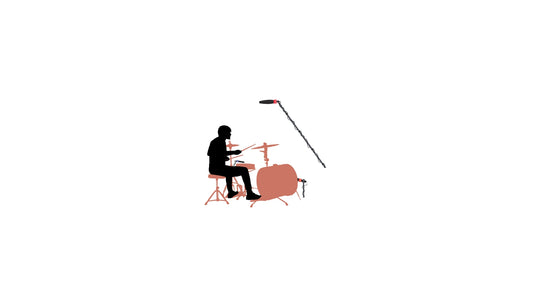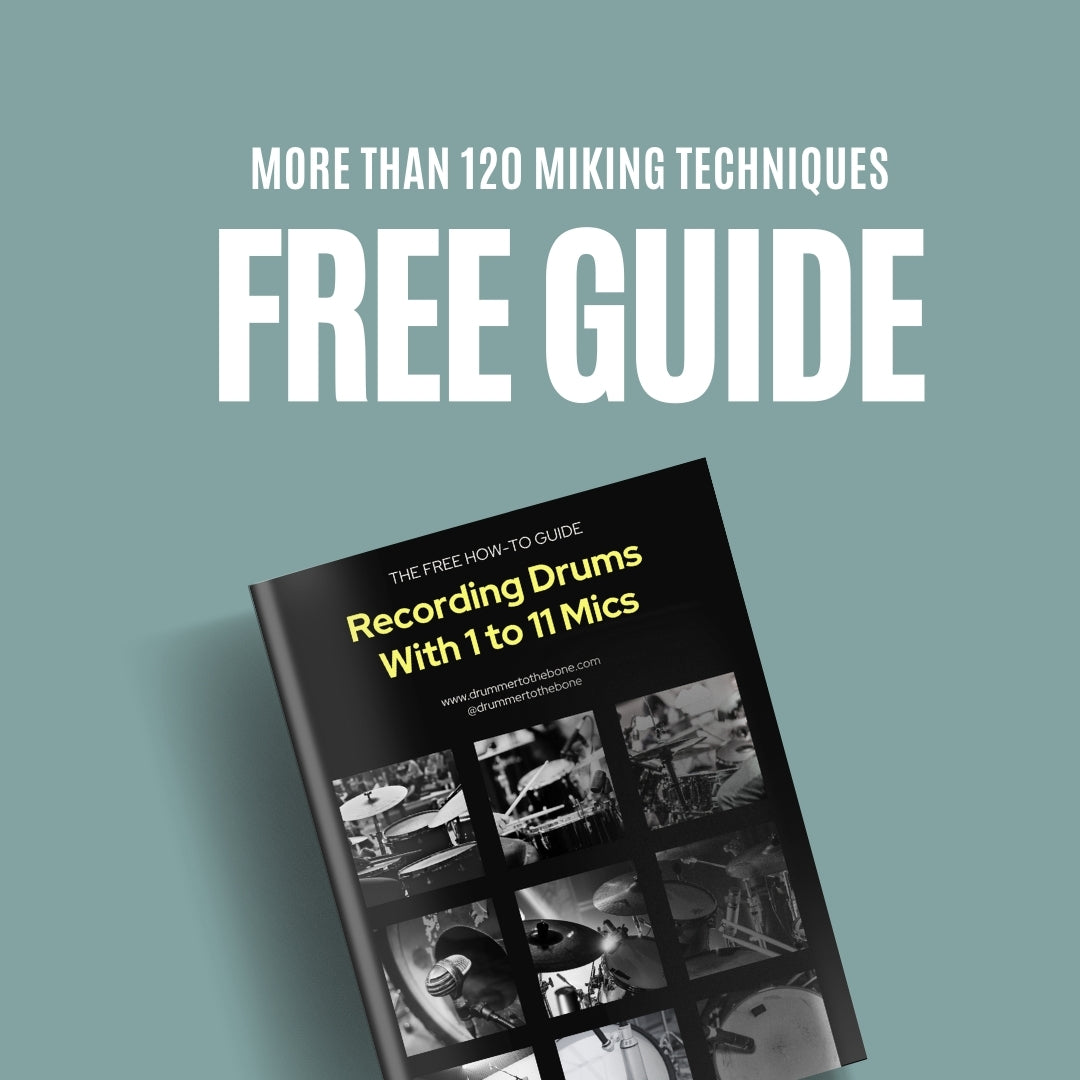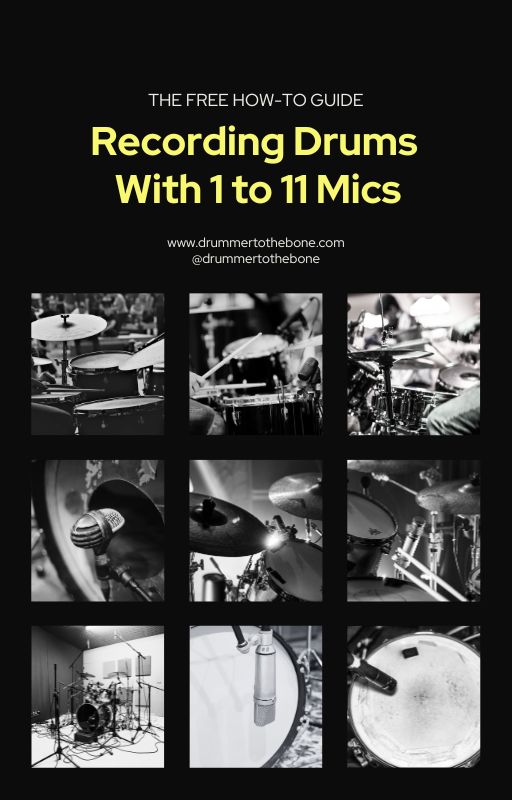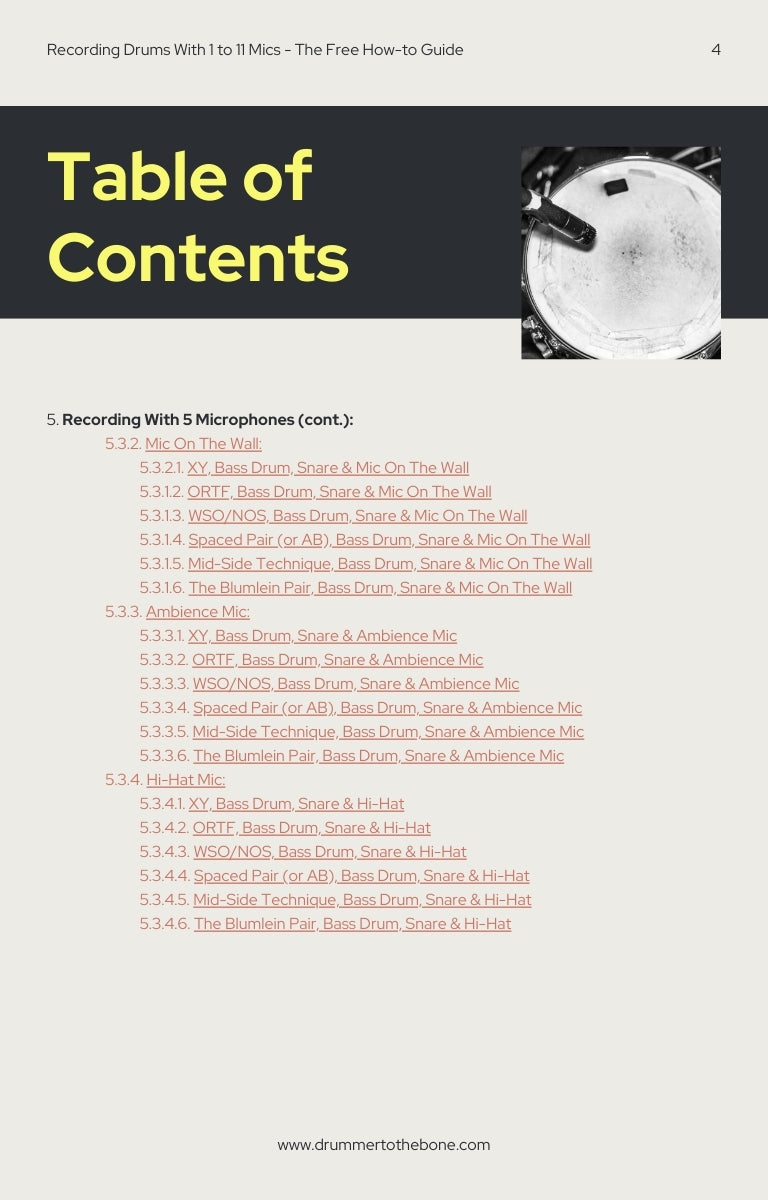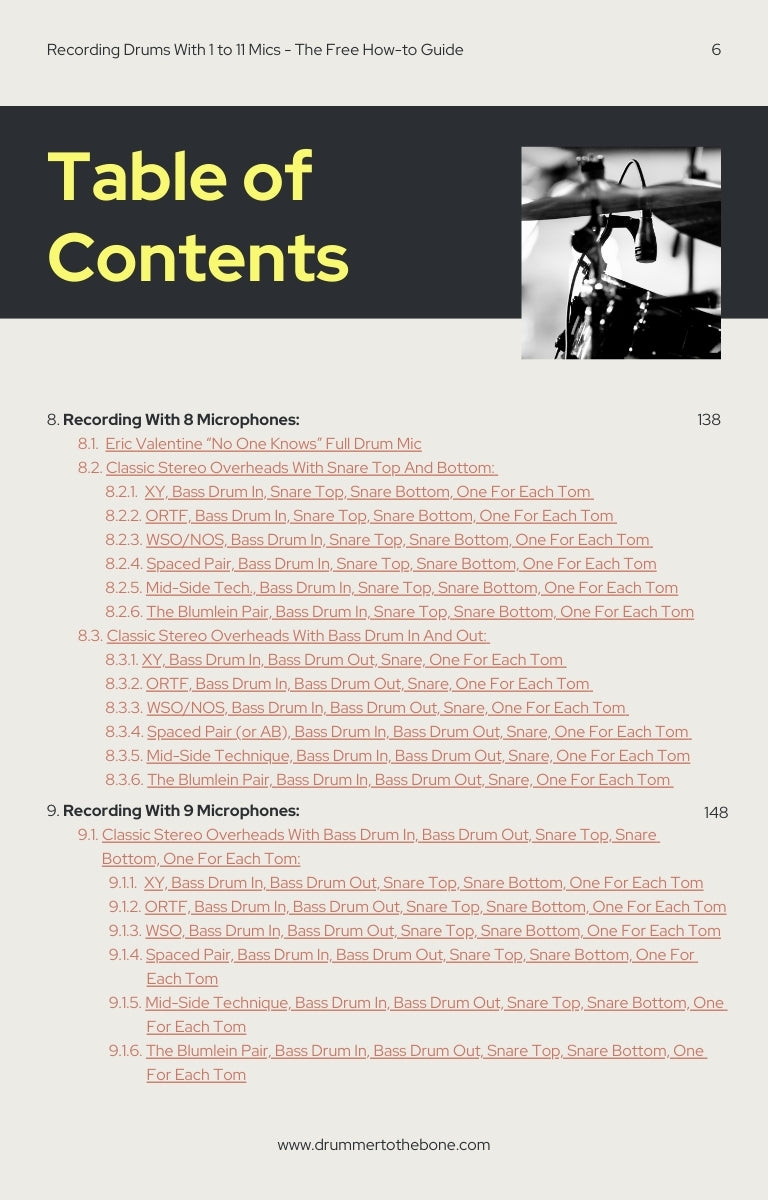If you’ve checked out the links for Eric Valentine’s basic drum miking for “Songs for the Deaf”, you’ll notice that—except for the ambience—the bulk of the sound comes from 6 microphones: 3 rooms, 2 snares & bass drum.
Now, in the original method, for the snare Valentine uses a Northern Electric 633A salt shaker and a speaker in reverse as a microphone. That’s a key building block of the drum sound for that record. In our case, we’re going with a generic version. You can adapt it based on your needs.

*center mic should be at the same height as the “side” mics. Floor included for perspective.
Here’s the outline:
- Place each condenser mic (left, center and right) equidistant from each other.
- Place them around 3 feet off the floor. You don’t want to place them too high, otherwise you’ll lose a lot of low-end.
- Make sure you’re pointing them towards their corresponding section of the drum set.
- Place a microphone inside the bass drum (or just outside), to avoid additional bleeding
- Place a (preferable) dynamic mic on the snare, about 3 fingers from the top head.
- Place a dynamic mic on the bottom of the snare, ideally on the opposite place for the top microphone, about 3 fingers from the resonant head.
- You might want to reverse the polarity on one of the snare mics (usually bottom mic), in order to obtain a fuller sound.
Pros of this technique:
- A holistic sound of the drums, with great stereo image possibilities with the left & right mics, but a centered mono signal with the center-front.
- A good middle ground for room sounds and bass drum & snare presence.
- Added boost to bass drum and snare.
Cons:
- Your cymbal sound will not be as bright as with traditional overhead techniques.



